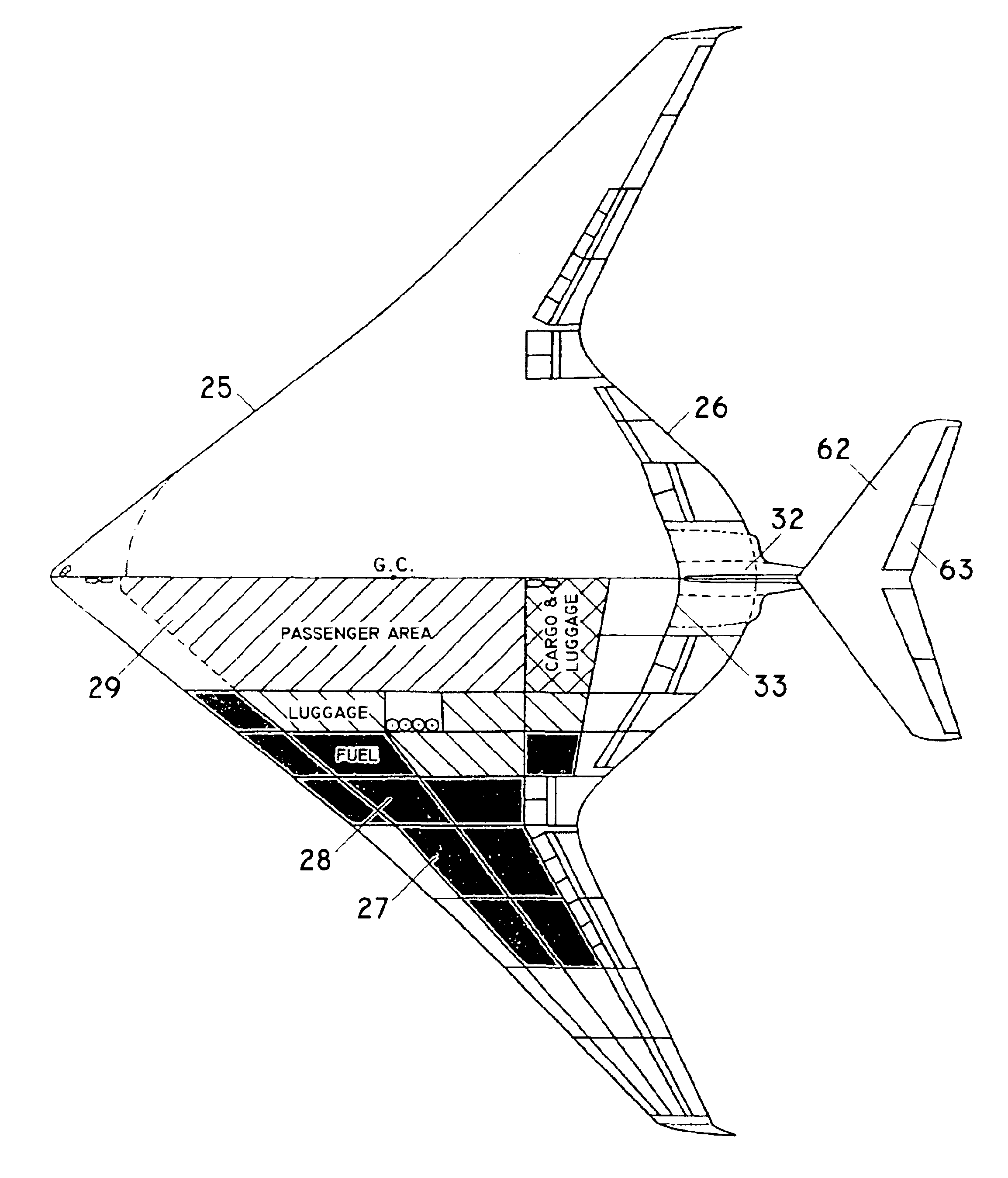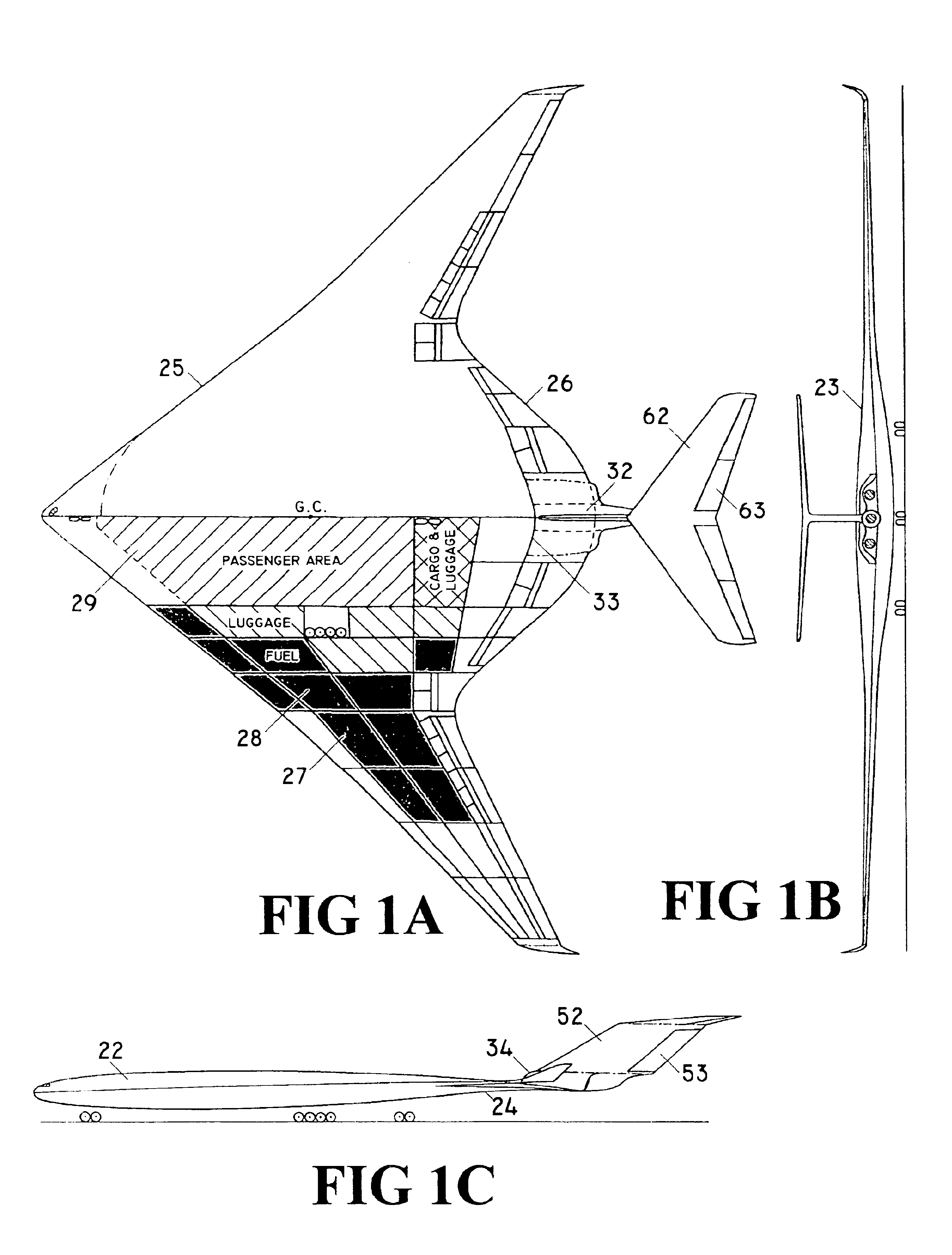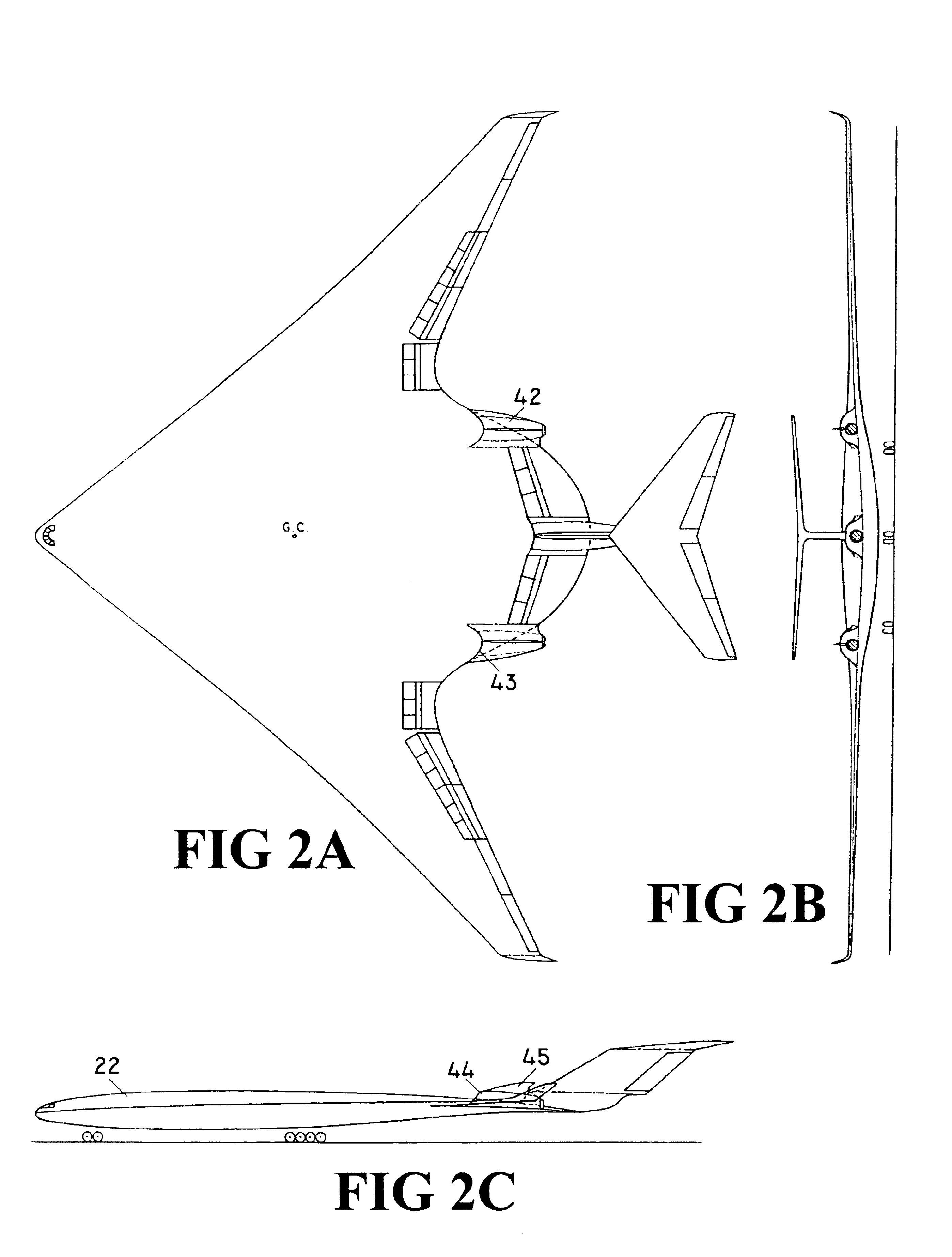Tailed flying wing aircraft
a flying wing and aircraft technology, applied in the field of tailed flying wing aircraft, can solve the problems of reducing reducing the wing span, and limiting the maneuverability of aircraft on the ground, so as to reduce the wing span
- Summary
- Abstract
- Description
- Claims
- Application Information
AI Technical Summary
Benefits of technology
Problems solved by technology
Method used
Image
Examples
Embodiment Construction
FIGS. 1 to 3 show three aerodynamic concepts of large tailed flying wing subsonic aircraft.
[0065]FIG. 1 shows a new aerodynamic concept for large high subsonic aircraft that is composed from main body 22, central jet engine pylon 32, fin 52 with rudder 53, and tailplane 62 with elevator 63. Main body 22 is shaped as a unique airlifting body that is defined with main body upper surface 23, main body under surface 24, main body leading edge 25, and main body trailing edge 26. Cross sections of main body 22 in airflow direction have airfoil shapes. Merging lines between main body leading edge 25 and main body trailing edge 26 in the direction of airflow represent chords of the main body airfoils.
[0066]Main body 22 along its span has three distinctive sections: main body central section 29, two symmetrical main body transition sections 28, and two symmetrical main body external wings 27. Main body central section 29 with its very long chords represents the largest section of the airlift...
PUM
 Login to View More
Login to View More Abstract
Description
Claims
Application Information
 Login to View More
Login to View More - R&D
- Intellectual Property
- Life Sciences
- Materials
- Tech Scout
- Unparalleled Data Quality
- Higher Quality Content
- 60% Fewer Hallucinations
Browse by: Latest US Patents, China's latest patents, Technical Efficacy Thesaurus, Application Domain, Technology Topic, Popular Technical Reports.
© 2025 PatSnap. All rights reserved.Legal|Privacy policy|Modern Slavery Act Transparency Statement|Sitemap|About US| Contact US: help@patsnap.com



